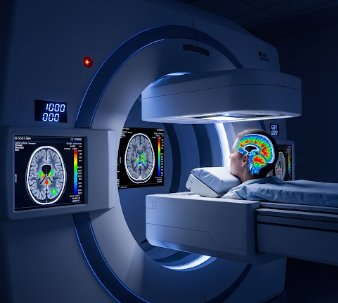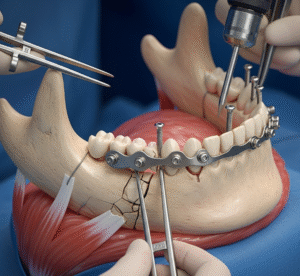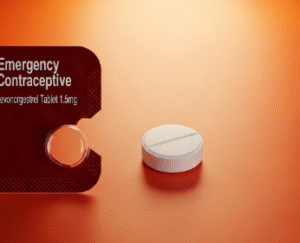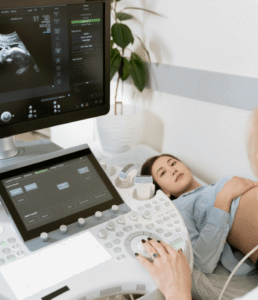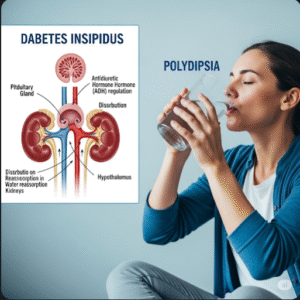What it is
A PET scan (Positron Emission Tomography) is an advanced medical imaging technique that provides detailed information about the body’s metabolic activity. Unlike X-rays or CT scans, which show structural details, a PET scan detects chemical and functional changes in tissues, helping doctors diagnose, stage, and monitor diseases.
➡ How it works:
- Patients are injected with a radiotracer, usually a form of glucose (FDG), which emits positrons.
- The PET scanner detects these emissions and creates 3D images of metabolic activity.
- Areas of high metabolic activity, such as cancer cells, inflammation, or active infection, appear brighter on the scan.
💡 Key points:
- PET scans are often combined with CT or MRI for detailed anatomical and functional imaging (PET/CT or PET/MRI).
- The procedure is non-invasive and usually takes 30–60 minutes, excluding preparation time.
- In Korea, PET scans are widely available in major hospitals and specialized imaging centers with state-of-the-art equipment.
Why it’s done
PET scans are used for diagnosis, treatment planning, and monitoring of several medical conditions:
➤ Medical indications include:
- Cancer detection and staging → Identify tumor location, size, and metastasis
- Monitoring cancer treatment → Evaluate response to chemotherapy, radiation, or targeted therapies
- Neurological conditions → Detect Alzheimer’s disease, Parkinson’s disease, and epilepsy foci
- Cardiac conditions → Assess areas of poor blood flow or damaged heart tissue after a heart attack
- Infection and inflammation → Detect abscesses or inflammatory diseases not visible on other imaging
➤ Key benefits:
- Early detection of disease even before structural changes occur
- Guides treatment decisions and surgical planning
- Monitors therapy effectiveness
- Reduces unnecessary procedures by accurately identifying affected areas
Alternatives
While PET scans are highly informative, alternatives or complementary imaging methods include:
✔ CT scan → Shows structural details but not metabolic activity
✔ MRI scan → Provides high-resolution soft tissue images
✔ Ultrasound → Non-invasive, for certain organ assessments
✔ Bone scan → Detects skeletal metastases
✔ SPECT scan → Similar to PET but lower resolution and different radiotracer
Note: PET scans are particularly valuable when functional imaging is critical, such as detecting early-stage cancers or neurological disorders.
Preparation
Proper preparation is essential to ensure accurate PET scan results:
🔹 Medical instructions
- Avoid strenuous exercise for 24 hours before the scan
- Fast for 4–6 hours prior to the procedure (water usually allowed)
- Inform the doctor about medications, allergies, pregnancy, or breastfeeding
🔹 Clothing and accessories
- Wear comfortable clothing without metal zippers or buttons
- Remove jewelry, hairpins, or any metallic objects
🔹 Blood sugar control
- Diabetic patients may need special instructions to control glucose levels before the scan
🔹 Patient education
- Understanding the procedure, duration, and radiation exposure
- Knowledge of how tracer injection works and what to expect during the scan
How it’s done
The PET scan procedure is straightforward but involves multiple steps for accurate imaging:
➡ Step-by-step process:
- Radiotracer injection
- A small amount of radioactive glucose or other tracer is injected intravenously
- Patient rests quietly for 30–60 minutes to allow distribution
- Scanning
- Patient lies on a table that slides into the PET scanner
- Remain still during scanning to avoid blurring images
- Total scan time: 20–45 minutes depending on body region
- Combination with other imaging
- Often combined with CT or MRI for structural correlation
- Enhances accuracy in diagnosis and treatment planning
- Post-scan
- Patients may resume normal activities
- Drink plenty of fluids to help eliminate the tracer from the body
💡 Tips for accuracy:
- Avoid talking, chewing, or moving unnecessarily during uptake and scanning
- Follow all dietary and medication instructions given by the imaging center
Recovery / Expected Outcomes
PET scans are non-invasive, so no physical recovery is needed.
🔹 Patient benefits:
- Rapid diagnosis and staging of cancer and other diseases
- Assessment of treatment efficacy
- Early intervention when abnormalities are detected
🔹 Follow-up:
- Radiologist prepares a detailed report
- Physician reviews results to adjust treatment or further investigations
- Routine monitoring scans may be scheduled for patients undergoing therapy
💡 Safety:
- Minimal radiation exposure, comparable to a few months of natural background radiation
- Safe for most adults; special precautions for pregnant or breastfeeding women
Complications / Considerations
PET scans are generally safe, but some considerations include:
⚠ Radiation exposure → Low risk, but cumulative exposure should be monitored
⚠ Allergic reaction → Rare reaction to radiotracer
⚠ Discomfort → Lying still for 20–45 minutes may be uncomfortable
⚠ Blood sugar interference → High glucose levels can affect image quality
Mitigation:
- Follow preparation guidelines strictly
- Inform the imaging team of any medical conditions
- Hydrate well post-procedure to reduce radiation retention
Treatment Options in Korea
PET scans in Korea are widely available in advanced hospitals and imaging centers equipped with modern technology:
🏥 Hospitals offering PET scans:
- Seoul National University Hospital (SNUH) → Comprehensive PET/CT and PET/MRI services for oncology, neurology, and cardiology
- Asan Medical Center → State-of-the-art PET imaging with professional interpretation and follow-up care
- Samsung Medical Center → Advanced hybrid imaging services for precise diagnosis and treatment planning
- Other major centers → Severance, Bundang, and St. Mary’s Hospitals offer PET scans with fast reporting and patient education
💰 Insurance and cost:
- National Health Insurance may cover PET scans for certain indications like cancer staging
- Private insurance may cover additional scans or combined PET/CT services
- Costs vary depending on hospital, type of PET scan, and combination with other imaging
🔹 Additional support:
- Oncology, cardiology, and neurology departments provide integrated care
- Pre-scan counseling and post-scan interpretation are standard
- Patient support programs assist in understanding results and treatment planning
Conclusion
The PET scan in Korea is a highly effective, non-invasive imaging tool for detecting and monitoring a wide range of medical conditions, especially cancer, neurological, and cardiac diseases. By combining metabolic and structural imaging, PET scans provide critical insights that guide treatment decisions, monitor therapy, and improve patient outcomes.

